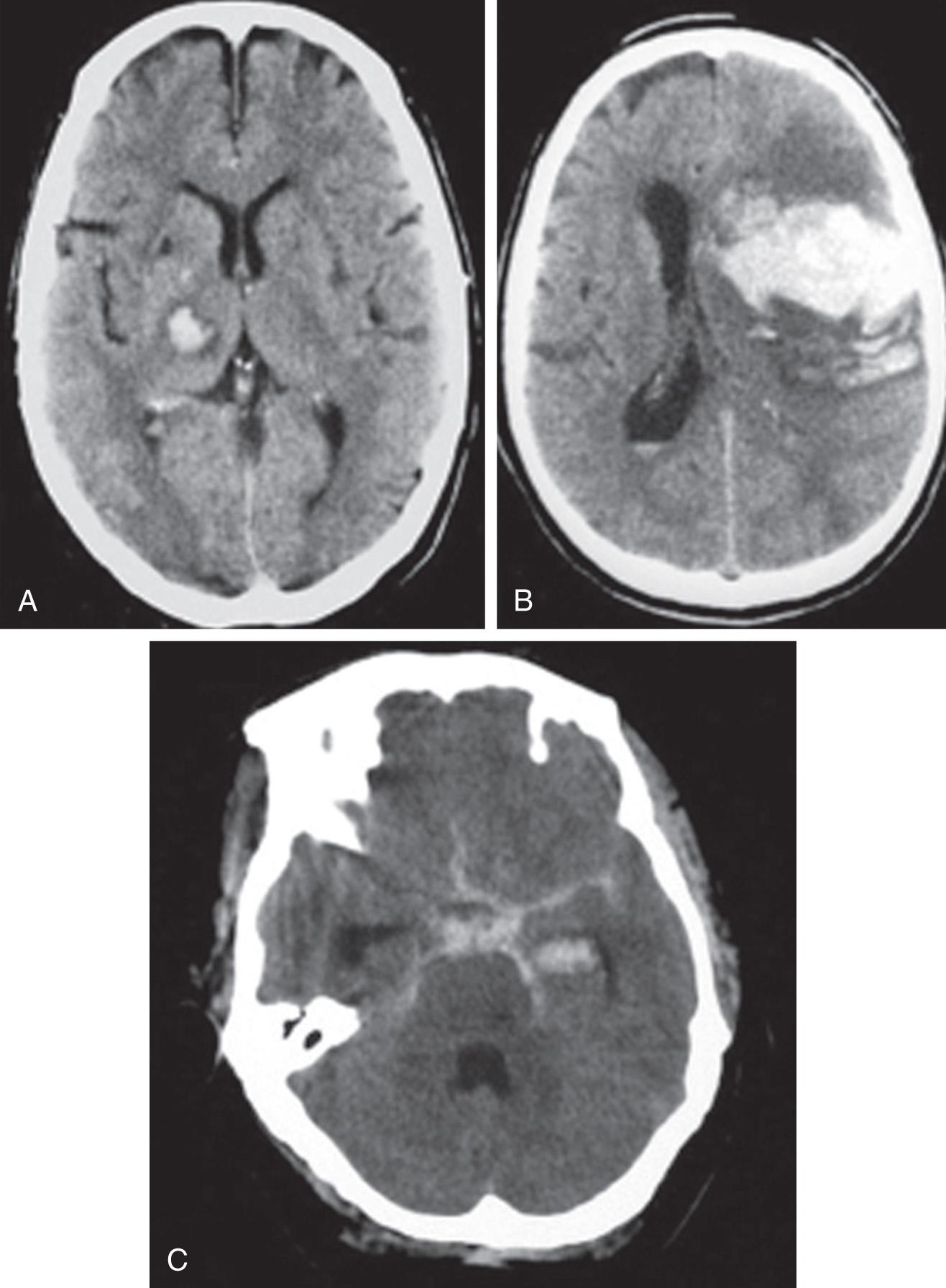Physical Address
304 North Cardinal St.
Dorchester Center, MA 02124
The most common basic causes of stroke are ischemic stroke and hemorrhagic stroke. Less commonly, cerebral venous sinus thrombosis (CVST) can also lead to stroke. Ischemic stroke can be due to large vessel atherosclerosis, intrinsic small vessel disease, and cardioembolic stroke. Hemorrhagic stroke includes intracranial hemorrhage and subarachnoid hemorrhage (SAH). Hemorrhagic stroke and CVST are addressed in this chapter. Ischemic stroke and transient ischemic attack (TIA) are addressed in the preceding chapter.
Hemorrhagic strokes include SAH (usually due to aneurysm rupture) and parenchymal intracerebral hemorrhage (ICH). Overall, approximately 6% of strokes are due to deep ICH, 3% are due to lobar ICH, and 3% are due to SAH. Although ischemic strokes are more frequent, hemorrhagic strokes have a higher morbidity and mortality. Because subdural and epidural hematomas are extra-axial, these bleeds are not considered strokes.
Clinical clues pointing to a hemorrhagic etiology include an early diminished level of consciousness and worsening of symptoms over minutes to hours. Headache is more common in hemorrhagic stroke and is the cardinal feature of SAH. Computed tomography (CT) of the head is the most reliable way to distinguish ischemic and hemorrhagic strokes, with acute hemorrhage appearing hyperdense ( Fig. 60.1 ).

Intraparenchymal ICHs are classified by their location: deep or subcortical ICHs are associated with uncontrolled hypertension in 60% of cases; lobar or cortical ICHs are more concerning for underlying mass, arteriovenous malformation, or cerebral amyloid angiopathy (CAA).
Hypertensive hemorrhages occur most frequently in patients with a history of poorly controlled hypertension. They are associated with small vessel ischemic changes and microbleeds of the basal ganglia, deep white matter, brainstem, and cerebellum. These hemorrhages can occur in the young and old and occur more frequently and at younger ages in Black and Hispanic individuals.
Become a Clinical Tree membership for Full access and enjoy Unlimited articles
If you are a member. Log in here